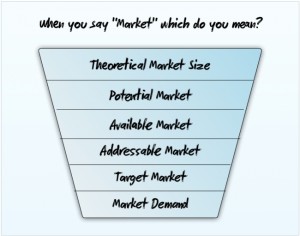Market research is at the heart of any branding, product launch or product innovation activity. The process has a logical flow and should be understood in a methodical way.
At the base of any successful business, lies a thorough understanding of the dynamics of the market. A Samsung succeeds in India and globally because it knows people want features of a high class mobile phone at a low cost. And an Apple proves to be the trend setters because it continues to provide exclusivity to its loyalists. Several parallels can be drawn in other sectors. An in-depth analysis of each will tell you that whether to launch a product or to sustain it in cut-throat competition, you need the backing of a solid market research.
Nobel Peace Prize winner Albert Szent-Gryorgyi has aptly summarized what is research. In a quirky quote, he observes, “Research is to see what everybody else has seen, and to think what nobody else has thought.” Applying this logic to market research, it is essentially seeing a void that has been there for years, like the necessity of a milk chocolate. Then begins an inspired process of taking defined steps towards filling up this vacuum – understanding the market, finding the space for your product, understanding competitors, checking future prospects etc. Let us look at them one by one.
Understanding the Market
There are essentially 3 parts of this process:
- Estimating the market size
- Estimating the market share of your product category
- Estimating the available market share for your product
So if you’re thinking of launching a milk chocolate in a particular country, the first step is to get basic statistics like population of the country, its buying capacity and subjective stats like the child population of the country.
You can then evaluate the chocolate industry of the country and understand what percentage of the market share goes to chocolates. Then, you must define what percentage is still to be taken. Here, you need to clearly understand the USP of your product and place it accordingly. With this evaluation, you can decide who your competitor is. So, if your chocolate is competing Cadbury Dairy Milk, you must define how your product is different or better than Dairy Milk. It’s often that you have to snatch market share and not just find or create it.
Understanding the Customer
Only statistics won’t help you. They definitely give insights into market trends, but to understand the pulse of the market, you need to visit the shopping alleys. What do customers buy? Are they satisfied with what they currently consume? Would they like to try new options? There are many factors, anticipated and unexpected, that emerge out of this research. One dialogue with your potential customers can spark a zillion ideas and give you specific pointers for your product placement.
Assessing Future Prospects
Market researchers often stumble at this crucial point. Research is assumed to be a onetime process and once the product is launched, it is abandoned altogether. Every product has its life in its current form and needs to evolve with time. It is very important to assess initially itself as to how it will fare after 10 years in the market. Understanding the changing market trends, adjusting, improvising and innovating keeps you in the race. The backbone is, of course, continual market research.
Such interesting and analytical aspects are part of NorthPoint India’s exclusive course on Marketing Research. This is a post-graduate program is constituted and executed in partnership with Nielsen Corporation, a global leader in marketing research.




